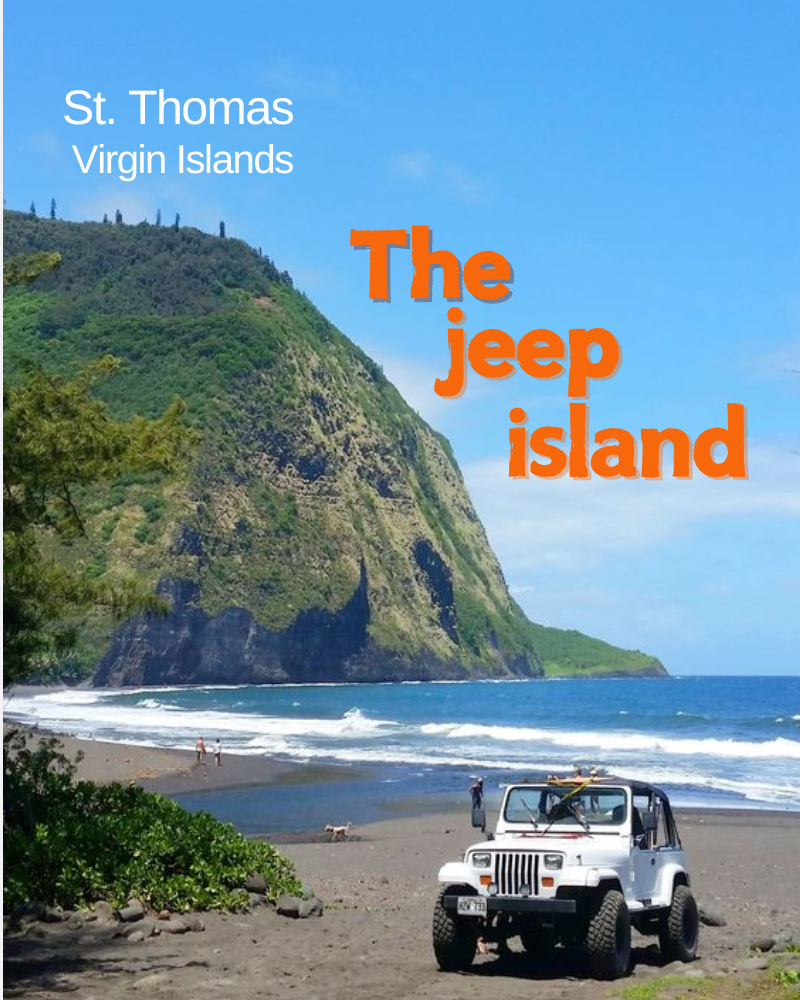Creating a travel destination
Attracting attention to a commercial product requires a market opportunity, mental availability, a unique idea wrapped in a meaningful story, and a smart advertising campaign to get the message out (preferably, all of the above). On a recent visit to the US Virgin Islands (not to be confused with the British Virgin Islands, located “next door”), a Caribbean nation that, for the lack of meaningful differentiation, is perceived to be just another option among many, I wondered—do the same conditions apply to a travel destination?
The Caribbean conundrum
Most Caribbean nations share the same pristine oceans, white sandy beaches, and cliché advertising campaigns touting a similar story. With little to choose by, other than availability and price, for the average US traveler, the little Caribbean countries seem like one Caribbean getaway. It’s like bundling France and Macedonia due to their proximity and similar weather conditions. But people don’t travel to France because of the weather, nor do they go there for one feature in particular. Yes, Paris has a tall tower, but so does Toronto. The main reason people visit France is the country’s unique story; the image of “The City Of Love”, cultivated through decades of perception-molding using advertising, movies, music, and pop culture references.
What’s the story that could set the Virgin Islands apart from its neighbors?
At the core of every compelling story lies a unique, relatable, and simple idea that differentiates one option from the rest. The “magic formula” often includes a competitive advantage or meaningful distinction that appeals to those who are interested or might be interested in it. But meaningful differentiation doesn’t always require drastic innovation. Sometimes, all it takes is nurturing an existing advantage into a desirable value proposition. The Virgin Islands’ advantage could be its topographical challenge.
The US territory is made up of roughly fifty islands, with three major ones—St. Croix, St. John, and St. Thomas—inhabiting roughly ninety-nine percent of the population. St. Thomas, the VI’s main island, is essentially a forested mountain surrounded by beaches. Getting from one side to the other requires either journeying around it, or climbing the mountain, driving up and then down steep and windy roads. Getting “around” is obviously challenging, inefficient, and time-consuming, but only if one is in a rush. For vacationing tourists, who experience time differently than the toiling locals, every climb is an opportunity to enjoy the exotic vegetation, pearly white beaches, and the vast blue ocean vistas, transforming an inconvenience into an attraction.
Mountain meets beach?
At first, I couldn’t understand why the airport car rental had a fleet of jeeps, but after my first mountainous ride in a Toyota Corolla, I realized that not only was a jeep the more practical and safer method of transportation, it was an experience in itself.
The early adopters, who travel to St. Thomas for this specific type of adventure, rent jeeps and ride them up to the summit, making impromptu observational pit-stops along the way, and then make their way down the other side of the mountain to relax on the beach.
The
Challenge
The beach/mountain experience proved to be a market fit with the jeep trekking enthusiast, but the US territory lacks some of the amenities, security features, and utilities the mainstream mainland tourists have grown accustomed to.
The Virgin Islands is not a rich country, nor is it completely independent. As an American satellite state, it relies heavily on US support, and as a result, didn’t go through the rigor that shapes a self-sustaining economy. Some things hadn’t yet settled, and others just don’t make sense.
Since most of the food is imported from the mainland (in spite of arable land and favorable food-growing conditions), food prices are higher by 20-40% compared to mainland US, (leaving the locals to shop at regional markets with fewer supplies and options). Poor transportation conditions are another crucial, yet neglected facet of a well-rounded mainstream tourist destination. Uber was a game changer for most of us; once you try it, it’s hard to wean yourself off it. Unless your experience of choice is haggling on price in an unfamiliar land while navigating the driver using the map on your phone, a ride-sharing service is a much-needed solution to the lack of easily accessible transportation.
The
Potential
Chasing customers with a generic offer is expensive and marginally efficient. But attracting them with a clear, meaningful, and novel narrative allows for premium pricing and reduces the customer acquisition cost (CAC), since a unique message travels far and wide on its own.

Places compete; destinations attract
Popular destinations are usually associated with a distinct experience, spearheaded by an icon that lends itself as a symbolic shortcut to the entire destination, e.g., Christ the Redeemer in Rio, the Taj Mahal in India, the Statue of Liberty in NYC, etc. (An icon simplifies communication by stamping the brand and anchoring the message in the mind, while creating advertising and merchandising opportunities.)
The right campaign can spark interest, build awareness, and even create demand from nowhere. For campaigns that turned an arid locale into a tourist destination, look no further than the City of Sin, or a more modern rebranding of a desert oasis into a global hub of luxury and innovation, in Dubai’s “Modern Arabia”.
Big Apple, meet Jeep Island
Far from an arid desert, the Virgin Islands has the conditions, potential, and opportunity to set itself apart by creating a unique experience that blends thrills and relaxation. Solving the infrastructure, transportation, security, logistics, and marketing challenges will help it position itself as a distinct destination and conquer the mainstream mind as The Jeep Vacation destination for generations to come.

Off-roading in the Caribbean
Share on:

